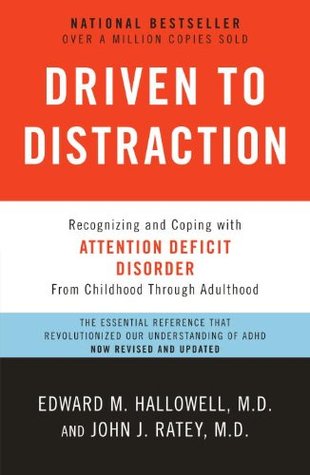More on this book
Community
Kindle Notes & Highlights
Read between
December 24, 2023 - February 3, 2024
ADD is a neurological syndrome whose classic defining triad of symptoms include impulsivity, distractibility, and hyperactivity or excess energy.
The hallmark symptoms of ADD are easy distractibility, impulsivity, and sometimes, but not always, hyperactivity or excess energy.
Due to repeated failures, misunderstandings, mislabelings, and all manner of other emotional mishaps, children with ADD usually develop problems with their self-image and self-esteem.
As a child, her symptoms were typical: hyperactivity, thrill-seeking, trouble in school, emotional intensity, and impulsivity. She also had many of the positive qualities that are often not mentioned when one hears about ADD: spunk, resilience, persistence, charm, creativity, and hidden intellectual talent.
Max’s story also brings out the crucial difference between the primary and secondary symptoms of ADD. Primary symptoms are the symptoms of the syndrome itself: distractibility, impulsivity, restlessness, and so forth. The secondary symptoms, and the ones that are
most difficult to treat, are the symptoms that develop in the wake of the primary syndrome not being recognized: low self-esteem, depression, boredom and frustration with school, fear of learning new things, impaired peer relations, sometimes drug or alcohol abuse, stealing, or even violent behavior due to mounting frustration.
The themes of ADD run throughout: inconsistency, and inconsistency again, creativity, provocative behavior, winning personality, varying motivation, exasperating forgetfulness, disorganization and indifference, underachievement, impulsivity, and the search for excitement rather than discipline.
Easy distractibility, trouble focusing attention, tendency to tune out or drift away in the middle of a page or a conversation, often coupled with an ability to hyperfocus at times.
While we all need external structure in our lives—some degree of predictability, routine, organization—those with ADD need it much more
than most people. They need external structure so much because they so lack internal structure. They carry with them a frightening sense that their world might cave in at any moment. They often feel on the brink of disaster, as if they were juggling a few more balls than they’re able to. Their inner world begs for reassurance, for signposts and guidelines.
the diagnosis of ADD is based first and foremost on the individual’s history or life story.


